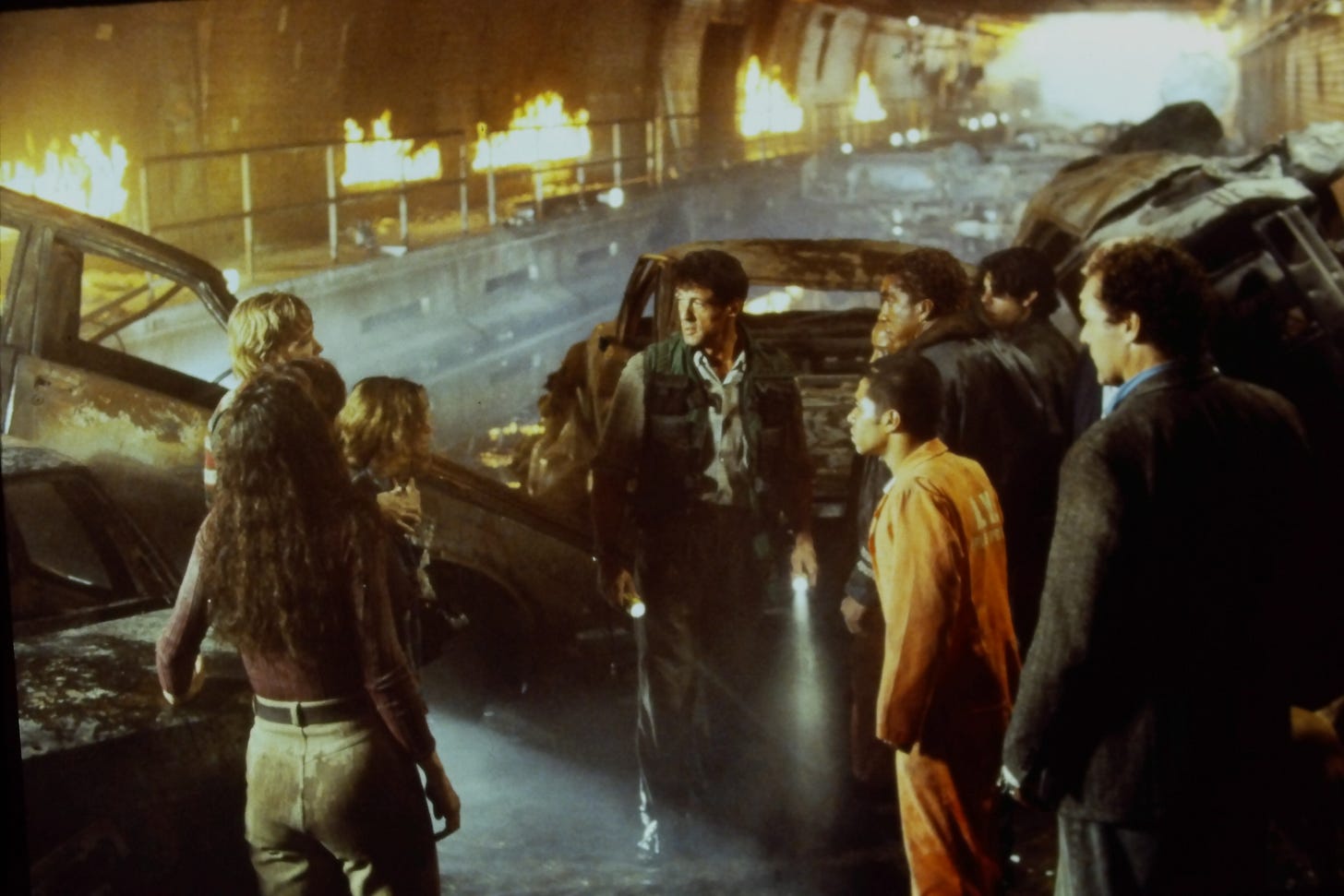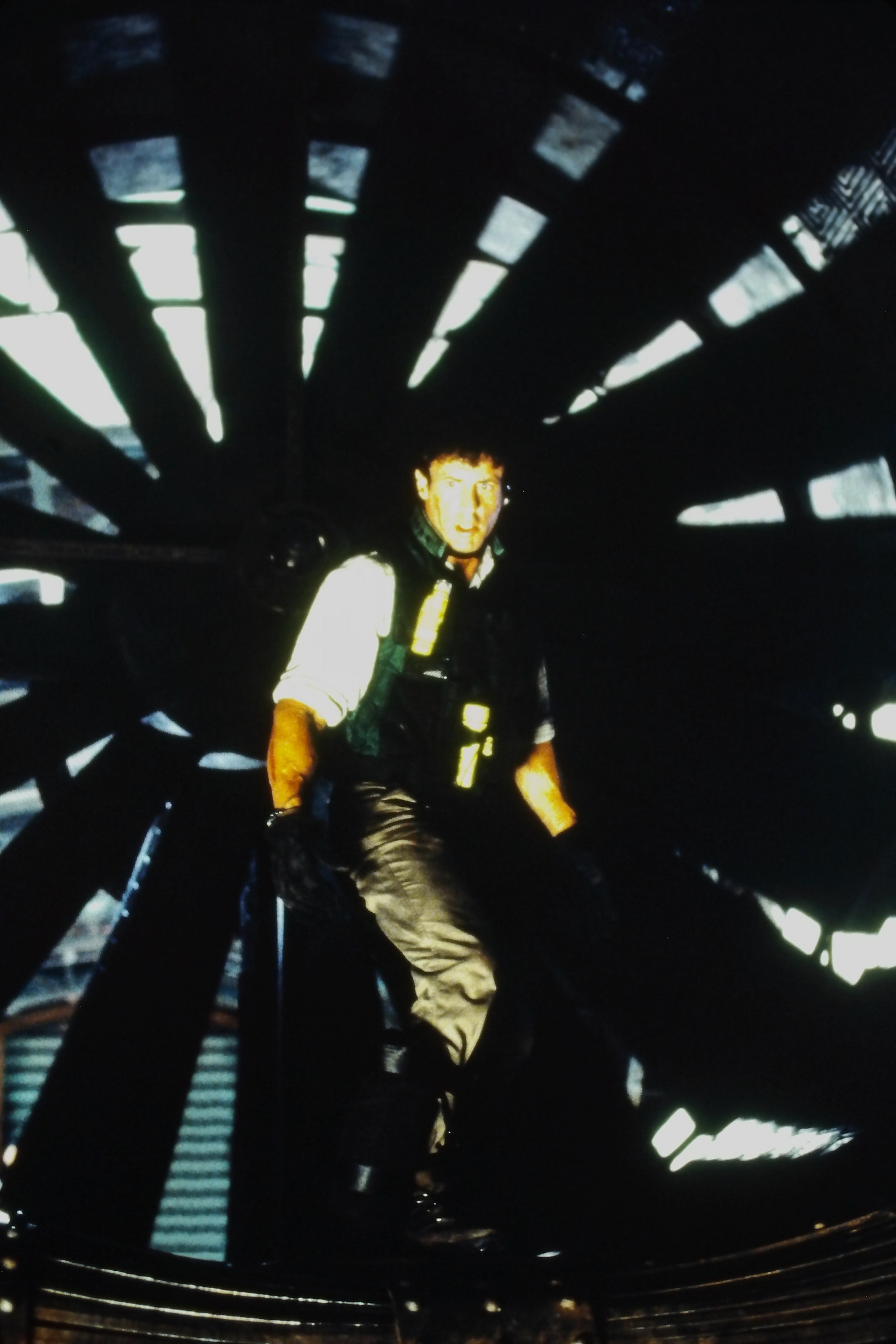Daylight (1996) Behind the Scenes: When Movies Become Real
Sylvester Stallone said the tunnel disaster depicted in the movie could become a reality. Three years later, reality struck the tunnel that connects France and Italy.

This article is part of a series where I write about an older movie using insights from a press kit, original screenplay, or other piece of memorabilia. For Daylight I collected the original press kit that contains some fascinating behind the scenes information included in this article. Enjoy!
This is the movie that taught me as a young boy that you could die from being very cold.
In the disaster-action movie Daylight, written by Leslie Bhohem (Dante's Peak) and directed by Rob Cohen (The Fast and the Furious), hypothermia is one of the many faceless villains a trapped group of civilians face after a transport truck explodes and causes the Holland Tunnel under the Hudson River to collapse.
After ex-Emergency Medical Services chief Kit Latura (Sylvester Stallone) makes it through an obstacle of massive wind turbines, he contacts the group and a scared girl named Ashley asks if they're all gonna drown. After explaining they won't, a juvenile detainee named LaTonya asks a great question (scene 0:58:00).
INT. TUNNEL
LATURA
Look Ashley. There's still time to stop the leak before it gets high enough to worry about drowning. That's the good news.
ASHLEY'S MOTHER
What's the bad news?
LATURA
This water's thirty-eight degrees. All we have to worry about is hypothermia.
LATONYA
Hypo-what?!This is exactly what I was thinking in 1997 when watching the movie for the first time on VHS.
I can still remember seeing the orange glow of the key art for the VHS cover on the New Releases shelf at the Hollywood Video down the street from my childhood home. I also remember the key art for Striptease (1996) on the cover of the VHS rentals at the other end of the store.
Striptease-what?!
Rewatching Daylight nearly thirty years later was not as nostalgic as I had hoped, but I'm glad I returned to it. The movie has a good heart. Watching it and reading through the press kit got me thinking about how disaster-action movies like this can become more than mere entertainment.
Director brings experience with disaster to set
Director Rob Cohen came to the movie with firsthand experience facing disaster.
In 1980, while staying at a hotel in Boston, the building caught fire and he was rescued by firemen with an extended ladder from the ninth story window.
"It was like a real life Towering Inferno," said Cohen in the production information pamphlet of the press kit. "I had seen the movie and actually used some of the techniques from it: staying low to the floor to avoid breathing the smoke, using wet towels to block off the bottoms of the doors, and staying put until the rescuers were ready."
Five people died in the fire, so this was no small event.
And neither is Daylight. A tunnel set stretching a third-of-a-mile in length was specially constructed for the movie and filming in it was especially grueling for the cast and crew with shooting schedules of up to 14-hour days. One day, they even had to evacuate the tunnel because of a gas leak.
"The physical conditions under which we worked in the tunnel were a whole other matter," Stallone said. "Everyone there was pushed to their physical limits. The tunnel itself became a real psychological and physical testing ground for everyone's nerve and verve."

Stallone also mentioned that the movie could easily become a reality due to aging infrastructures.
Sure enough, three years after the movie was released and he made this comment, a transport truck—similar to the one that explodes and causes the disaster in the movie—caught fire inside the Mont Blanc Tunnel.
On 24 March 1999, a transport truck caught fire while driving through the Mont Blanc Tunnel between France and Italy. When it stopped halfway through the tunnel, it violently combusted. Other vehicles traveling through the tunnel quickly became trapped and they also caught fire as firefighters were unable to reach the transport truck. 39 people were killed. In the aftermath, major changes were made to the tunnel to improve the safety. (Wikipedia)
Though filmed well before the Mont Blanc tunnel disaster, Daylight does a great service to capturing the fireblast that those 39 people may have experienced before they died.
Kit West, an Academy Award winner for his work on Raiders of the Lost Ark (1981), was in charge of the special effects that made the fireblast feel real.
"We used a combination of on-set effects, miniatures, and computer graphics to provide a very detailed look inside the explosion," said Cohen. "Over 60 editing cuts and no slow-motion give a two-minute look at something that would only take seconds in real life."
I didn't deeply research the Mont Blanc tunnel fire, but I believe well-made disaster movies can become more than mere entertainment before, during, and after disaster strikes. They invite us to think about how we might respond to disaster, inspire us to respond to disaster in courageous ways, and even give us a few tips for how to survive, like the movie The Towering Inferno (1974) did for Cohen in that hotel.
Has a movie helped you face disaster?
I cannot pinpoint a specific movie like Cohen did to prepare him for the hotel fire, though I'm confident I'm better prepared to face disaster because of the movies I've seen.
Conversely, scenes from movies like Saving Private Ryan inspired me to create disaster at a young age. Molotov cocktails! Of course, these previous firebombs could help me face disaster if, say, China was to invade.
Which movies, scenes, or events come to mind for you?



